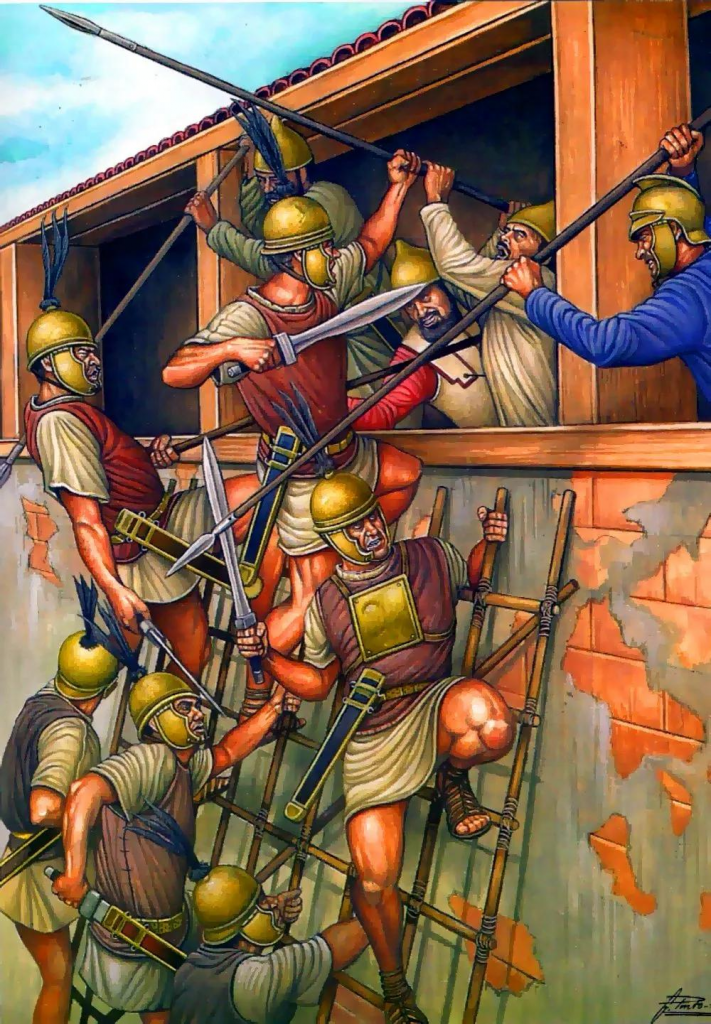In 203 BC, the Roman general Scipio Africanus was leading his forces across North Africa in a campaign that would ultimately bring the mighty Carthage to its knees. After his stunning victory at the Battle of the Great Plains, he shifted much of his attention to the siege of Utica, a strategically crucial port city in Carthage’s territory. But the Carthaginians were far from ready to surrender, and they fought back using all the resources at their disposal.
While Scipio’s forces had proven effective in battle, the Carthaginian navy, backed by Numidian allies, was a major threat. With direct confrontations failing, the Carthaginians adopted indirect strategies, hoping to use their superior fleet and local alliances to regain the initiative. But as history would show, their efforts would ultimately fail.

Scipio’s Clever Tactics
Having secured a major victory, Scipio sent his deputy, Laelius, to lead a smaller contingent of Italian cavalry and light infantry, aided by the Numidian king Massinissa. Their goal was simple: cut off Carthage’s inland support, particularly the supply lines that had kept the city well-stocked for years. Meanwhile, the bulk of the Roman army began advancing toward the Carthaginian heartland, putting pressure on the Senate and its vulnerable cities.
As Scipio’s legions marched forward, city after city surrendered, unable to withstand the Roman juggernaut. Even the key city of Tunis fell to Roman forces, leaving Carthage isolated and increasingly desperate.
The Surprise Fleet
However, just as victory seemed certain, Scipio faced an unexpected challenge. When his forces were only 15 miles from Carthage, he was shocked to see a large fleet of Carthaginian ships heading towards Utica, which had so far remained unconquered. The Carthaginians, led by the cautious commander Hamilcar, were attempting to reinforce the city and stave off Roman pressure.
Scipio quickly ordered a retreat, focusing on the Carthaginian fleet’s vulnerable point. He realized that while the Carthaginian ships outnumbered the Romans, they were smaller, lighter, and lacked the power of their predecessors. Scipio seized the opportunity to turn the tide in his favor.
Roman Ingenuity: The Floating Fortress
To counter the Carthaginian fleet, Scipio devised a brilliant strategy. He ordered the Roman transport ships—slow, but highly capable of carrying soldiers and siege equipment—into the front lines. The ships were connected by chains, masts, and wooden arms to form a sturdy defensive barrier. On this floating line, Scipio stationed over a thousand Roman soldiers, armed with artillery and ready for battle.
The Carthaginians, who had hoped to overwhelm the Romans with sheer numbers, were instead met with an iron wall of Roman firepower. Their ships were no match for the strength of Scipio’s defenses, and the Carthaginians hesitated to engage. A few desperate attacks were made, but they were quickly repelled.
In one final attempt to break the Roman line, the Carthaginians used harpoons to snag the transport ships, pulling them away from their anchored positions. While this minor success provided the Carthaginians with some morale, it hardly changed the outcome of the siege. Utica remained stubbornly resistant, despite being severely outgunned.
The Stalemate and Final Push
On land, the conflict was far less dramatic. Despite Carthaginian efforts to regroup and launch a counterattack under the leadership of Hasdrubal and Hannibal, the Roman forces remained firmly in control. Attempts to infiltrate Roman ranks and execute a surprise attack failed miserably. The failure of these land operations, combined with the dwindling supplies, made it clear that Carthage could no longer hold on.
By this point, Scipio had grown frustrated with the slow progress of the siege. He decided to abandon the prolonged attack on Utica and instead turned his focus on plundering the countryside to replenish his forces’ supplies. Meanwhile, the news of yet another Roman victory reached him, solidifying the fragile balance of power in his favor.
The End of the Carthaginian Threat
This confrontation is a key example of Scipio’s ability to adapt to changing circumstances. His use of strategic retreats, innovative tactics, and an unwavering focus on the larger goal helped secure the ultimate Roman victory. The siege of Utica marked one of the final chapters in the Second Punic War, setting the stage for the eventual fall of Carthage.
Legacy and Modern Relevance
Scipio’s campaign in North Africa showcases the power of flexibility and strategic thinking in warfare. By understanding both the strengths and weaknesses of his enemy, Scipio was able to outsmart the Carthaginians at every turn. His ability to innovate on the battlefield, especially with the “floating fortress” defense, is a lesson that modern military leaders can still learn from today. Moreover, this campaign demonstrates the importance of adapting to new challenges, a theme that resonates in both military strategy and leadership in general.
In today’s world, we often find ourselves facing complex challenges, much like Scipio did on the shores of North Africa. Whether in business, technology, or personal growth, the ability to pivot and think creatively can make all the difference.


No comments yet.